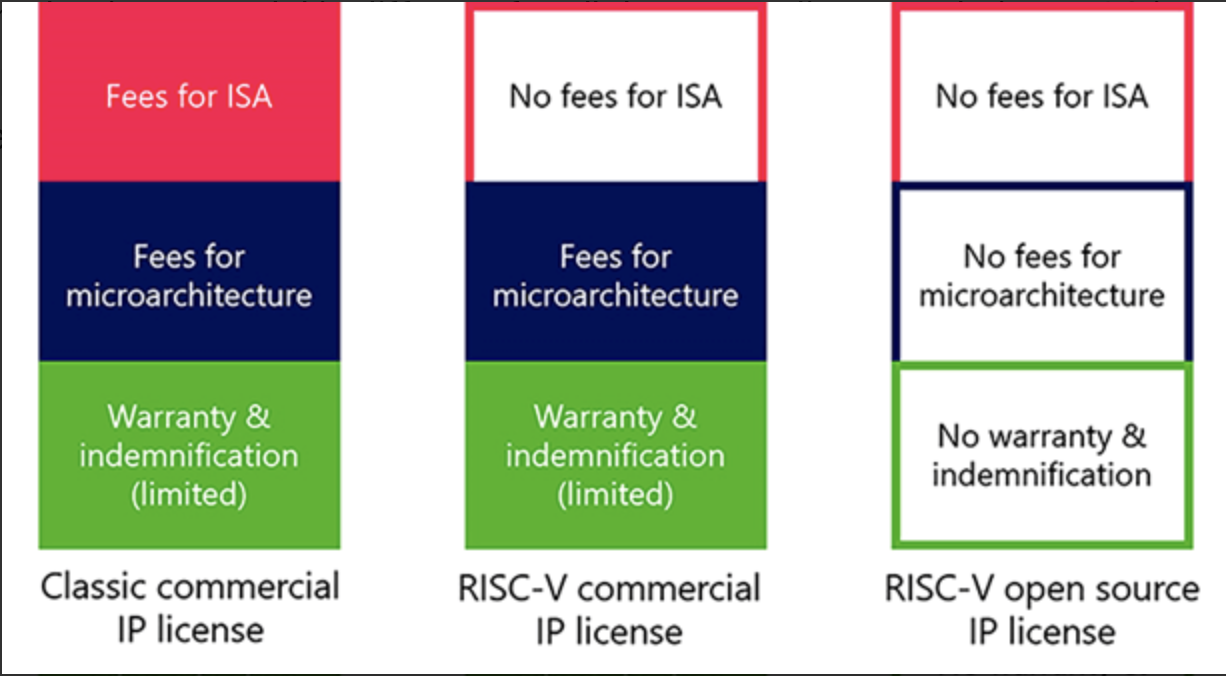Introduction:
In the ever-evolving landscape of computer architectures, three giants stand tall – Arm, x86, and RISC-V. Each with its unique characteristics, business models, and applications, these architectures shape the technological advancements we witness today.
In this blog post, we delve into the intricacies of each, exploring their origins, strengths, and the ongoing debate between open-source and closed-source designs.
Join Our WhatsApp News for updated information on semiconductors & AI
1. Arm Architecture:
Arm, initially a joint venture with Apple, has become synonymous with energy efficiency and dominance in the smartphone industry.
The “r” in Arm signifies its Reduced Instruction Set Computer (RISC) architecture, emphasizing a smaller instruction set.
This characteristic makes Arm processors exceptionally power-efficient, producing less heat compared to their counterparts. Over the years, Arm has steadily gained market share, particularly through Apple’s adoption of Arm processors in its devices.
Read More: How RISC V is the Danger for ARM’s Supremacy
2. x86 Architecture:
The x86 architecture, pioneered by Intel, has been the dominant player in the computing industry for a significant part of its history.
Known for its ability to handle extensive instruction sets, x86 chips traditionally offered greater processing power.
Even today, x86 architecture is prevalent in desktop and laptop computers. However, recent developments, such as the emergence of powerful Arm-based supercomputers, challenge x86’s historical dominance.
Read More: How Intel PC Dominance is Threatened by Qualcomm Snapdragon Elite
3. RISC-V Architecture:
RISC-V, the newcomer in this trio, introduces a compelling open-source alternative. Built on RISC principles like Arm, RISC-V distinguishes itself by offering full customization.
Companies can tailor their chips around an Instruction Set Architecture (ISA) designed for their specific processes. The absence of royalties and licensing fees makes RISC-V an attractive option for those seeking cost-effective solutions.
However, it requires additional expertise to develop custom architectures, posing a challenge in a field where semiconductor expertise is scarce.
Read More: China Deploys First Big RISC-V Server Cluster, Defying US Restrictions
Here’s a simple table comparing Arm, x86, and RISC-V across various aspects:
| Aspect | Arm | x86 | RISC-V |
|---|---|---|---|
| Origin | Joint venture with Apple | Developed by Intel and AMD | Open-source |
| Architecture Type | RISC (Reduced Instruction Set Computer) | CISC (Complex Instruction Set Computer) | RISC |
| Energy Efficiency | High | Varied | Varied (customizable) |
| Heat Production | Low | Varied | Varied (customizable) |
| Industry Dominance | Smartphone industry | Desktop and laptop computers | Emerging, customizable |
| Customization | Limited | Limited | Extensive |
| Licensing Model | IP licensing model | Developed by Intel and AMD | Free, open-source licensing |
| Market Share | Growing, especially in mobile devices | Dominant in PCs, servers | Growing, open-source adoption |
| Innovation Focus | Optimization for ease of use, continuous R&D | Optimization for performance, continuous R&D | Customization, open-source development |
| Cost Structure | Licensing fees apply | Proprietary, may include licensing fees | No licensing fees, customizable |
| Supercomputer Usage | Increasing presence | Historically dominant | Growing interest for customization |
| Expertise Requirement | Moderate | Moderate to high | High (custom architecture) |
Business Models:
The business models of these architectures further differentiate them. Arm follows a licensing model, where it owns the Intellectual Property (IP) and licenses it to other companies. On the other hand, x86 is developed exclusively by Intel and AMD. In contrast, RISC-V adopts a free licensing model, allowing companies to develop their IP based on the architecture.

Image Credits: Tech & AI investing
Open-Source vs. Closed-Source Debate:
The decision to choose between Arm and RISC-V often boils down to the ongoing debate between open-source and closed-source designs.
Arm optimizes its architecture for ease of use, investing in Research and Development (R&D) to enhance its product and introduce innovations. It provides an industry standard for companies to build upon.
On the flip side, RISC-V provides unparalleled customization, allowing companies to tailor their architectures precisely to their needs without incurring licensing costs.
However, this customization comes at the expense of requiring specialized expertise in semiconductor design.

Conclusion:
As technology continues to advance, the battle between Arm, x86, and RISC-V unfolds on multiple fronts. The choice between these architectures depends on factors such as energy efficiency, processing power, and the trade-off between open-source flexibility and closed-source optimization. Whether it’s the dominance of Arm in the smartphone industry, the historical reign of x86 in desktops and laptops, or the disruptive potential of RISC-V in providing customizable and cost-effective solutions, these architectures shape the digital landscape we navigate daily. The future promises continued innovation and competition, driving advancements in computing architectures for years to come.




